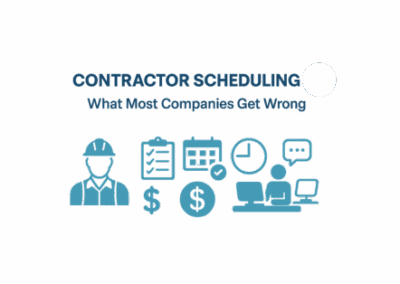Culture can be described simply as: What is it like to work around here? Employee onboarding is the opportunity for the organization to answer that question.”
Sandy Zannino, founder and CEO of Innovative Auto HR
Chances are if you are reading this you’ve had an experience with employee onboarding. Whether you were a new employee joining a new team for the first time or whether you were in charge of training up a new member of your team, you will know how important employee onboarding is. In this blog post, we are going to be discussing all things employee onboarding and the best practices related to it.
What is Employee Onboarding?

According to the Workable, employee onboarding is the “process of helping new hires adjust to social and performance aspects of their new jobs quickly and smoothly, and learn the attitudes, knowledge, skills, and behaviors required to function effectively within an organization.”
Effective employee onboarding is the difference between an engaged or non-engaged employee. It is the best form of welcome and will help to retain your employees. You need to put some planning into place to ensure the entire onboarding experience is a positive one because it paid off in the long run. In fact, 69% of employees are more likely to stay with a company for three years if they experienced great onboarding (SHRM).
Why is Employee Onboarding important?
Effective employee onboarding leads to:
- Improved employee retention
- Higher job satisfaction
- More engaged employees
- Increased productivity
- Lower staff turnover
- Less workplace stress and burnout
- Improved career effectiveness
The Employee Onboarding Process
Employee onboarding is not a one and done. It is an entire process that should be planned out carefully to ensure its effectiveness. According to research, organisations with structured employee onboarding saw a 60% year-over-year improvement in revenue. That’s some big growth! This is likely down to a combination of the positive effects listed above.
Let’s start with the interview process

Did you know employee onboarding actually begins at the first round interview? You’ve heard the saying that first impressions are everything, and the same is true with regard to interviews. Making candidates feel welcome and comfortable is the best first step as it gives them a good impression of the company and the people who work there.
Candidates should have a clear job description and be made aware of the hiring process. The hiring manager should share information such as the number of interview rounds, what kind of interviews they will be and what is expected of them as a candidate. For example, if there is a presentation round as part of the interview process you should let the candidate know in advance so they can prepare accordingly.
Consistent communication is the key to keep a candidate engaged in the hiring process. Ensure you let them know of any new information regarding their application as soon as possible. Poor communication during this stage can be the difference in a candidate choosing another company over your one.
During the interview itself, interviewers should aim to put the candidate at ease and give them their full attention. A seemingly distracted interviewer gives a poor first impression and can be offputting for the candidate.
Before the employee starts
So you’ve found the perfect employee for your vacant role and they have accepted your job offer. What’s next? Around a week or so before your employee starts the job, you can start preparing any paperwork that needs to be done. Sending this to you new hire in advance means means they can complete it before they start and it will be one less thing for them to worry about on their first day.
Important employee paperwork includes:
- Employee handbook
- Benefits booklet
- Policies and procedures
- Employee Contract
- Banking details
- Any insurance or pension plan documents
Getting set up on company systems can also be very time-consuming. This is another area that your onboarding team can work on before the employee starts to avoid any hassle on the first day.
- Company email address
- Phone/conferencing number
- Video conferencing platform
- Any necessary log ins to company specific platforms
- Time and attendance platform log ins
- Building access card/ ID Card

Employee Hardware
This will be dependent on the company and whether you organization works remotely or from the office. All in all, your employee should walk in on their first day and have the following items:
- Monitor
- Keyboard
- Mouse
- Desk chair
- Phone and headset
The list above is interchangeable depending on your industry and the basic tools your employees require.
Meeting the team
A great way to get your new hire integrated into the company is to arrange some short meetings with colleagues from different areas of the business. This gives the employee an opportunity to meet colleagues they may not have a chance to talk to. As well as that, this is good practice employee onboarding as the employee learns new things about the business from their colleagues. You should prepare reading materials or an assignment for your new hire to do when they start. There is nothing worse for a new employee than having to sit on their first day with nothing to do!
Your New Hire’s First Day
Another good way to ensure a positive employee onboarding experience is to send your new hire a welcome email. Send this on the day before so your new employee knows what to expect on their first day in advance. Make sure and include information like where to park or how to get into the office, start time etc. You should also send an email to the entire office letting them know a person is starting to welcome them in!
Meet your new hire on their first day and bring them on an office tour. You can also use this time for introductions with the other employees in the office. Afterward, a meeting with their new team is a good idea. Your new hire will get to know their colleagues and be made aware of other people’s responsibilities. It is good for a new hire to have someone on their team that they can ask their questions to, going forward also. Face-to-face introductions are ideal; however, if this isn’t possible, arrange a group call so the employee can meet their team virtually.
A meeting with HR is important during the early stages of the employee onboarding process. This allows learning of HR-related issues such as company policies, dress code, paid time off, benefits, and the company’s overall mission and values.

Ongoing Employee Onboarding
Employee onboarding doesn’t just last an employee’s first day. Schedule regular 1:1 meetings to make sure they have everything they need in their role to make them successful. A new hire may not always feel comfortable reaching out to ask questions but having dedicated time allows them to do so. Your team should have clear performance objectives and KPIs so they know what is expected of them over the upcoming months.
There should also be a 3 month and 6-month review of their performance to allow you to see how their probation period is going. This gives you an opportunity to let them know of the areas they are doing well in and also the areas in which they could improve too.
Employee Onboarding is crucial to retaining the talent you’ve spent time on recruiting. So put time and effort into the employee onboarding process and you’ll be rewarded with engaged employees who live up to their full potential!




